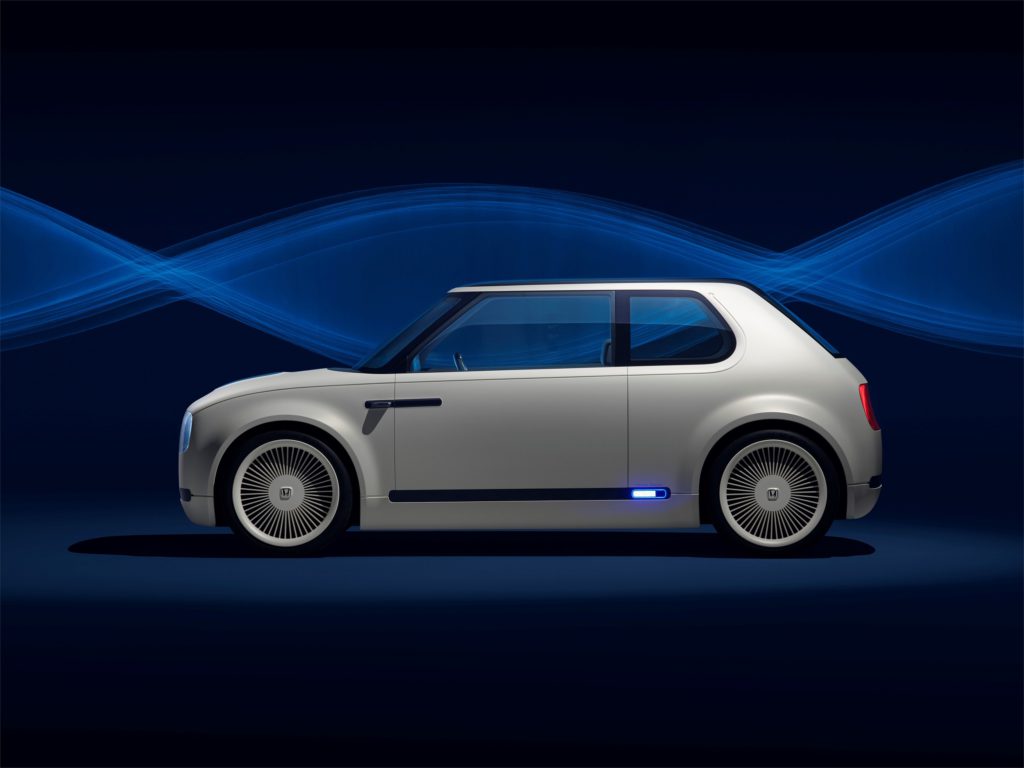Honda unveils bi-directional charging system with new Urban EV concept
12 September 2017

12 September 2017
Honda has unveiled an electric vehicle (EV) concept and a power management system which will give electricity back to the home or grid in an example of bi-directional charging.
Manufacturers are working on ways to make EVs more appealing to consumers. With the expected surge in demand, especially with bans on traditional engines in the UK and France expected to put strain on electricity networks, they are looking at bi-directional charging to allow drivers to get back what they put in. This could mean electricity is being provided to the home, or sold back to the grid.
Honda’s Urban EV Concept is built on a completely new platform from the Japanese vehicle manufacturer, setting the direction for the technology and design that the company will take with future electric vehicles
At its unveiling during the IAA show in Frankfurt, Honda CEO Takahiro Hachigo commented: ′This is not some vision of the distant future; a production version of this car will be here in Europe in 2019,’ he added, confirming that the concept is set to be launched within two years.
The concept also highlights the company’s vision of a world where mobility and daily life are linked, including an ′on-board automated assistant’ which the company states will act as a personal concierge, learning from the driver by detecting their emotions behind any judgements, and applying this knowledge to make new choices and recommendations.
The car also works with the company’s bi-directional charging system, the Power Manager. In a statement, the manufacturer says: ′The system is designed to incorporate electric vehicles into a smart power grid. It enables the collection and distribution of electricity between the grid, homes and businesses and electric vehicles, to intelligently balance demand and efficient storage of energy. Honda will apply its Power Manager technology as part of a smart grid pilot scheme in the west of France.’
Philip Ross, senior vice president of Honda Motor Europe, adds: ′We will incorporate electrified drivelines in two thirds of cars sold in the region by 2025. The introduction of our Power Manager system supports and reinforces our commitment. It uses advanced technology to intelligently integrate the electric vehicle into the wider power network, so it is no longer just a consumer but also a contributor to the grid. It underlines our pledge to develop a more sustainable mobility model.’
The system works by aggregating and distributing energy to and from the grid, solar panel-equipped homes or workplaces, and electric vehicles. Electricity is received into the system from the grid or is generated by the solar panels and can be used to power and heat the building as well as to charge the EV. While the EV is plugged in, the energy can be stored and used at home or sold back to the grid, potentially generating value for EV owners.
Honda Motor Europe will supply Power Manager units to the SMILE project (Smart Ideas to Link Energies) in a smart grid pilot scheme in France. A recent project in Denmark involving Nissan and Italian utility and energy company Enel highlighted how the Total Cost of Ownership (TCO) of EVs could be reduced by €1,000 or more.
Photograph courtesy of Honda